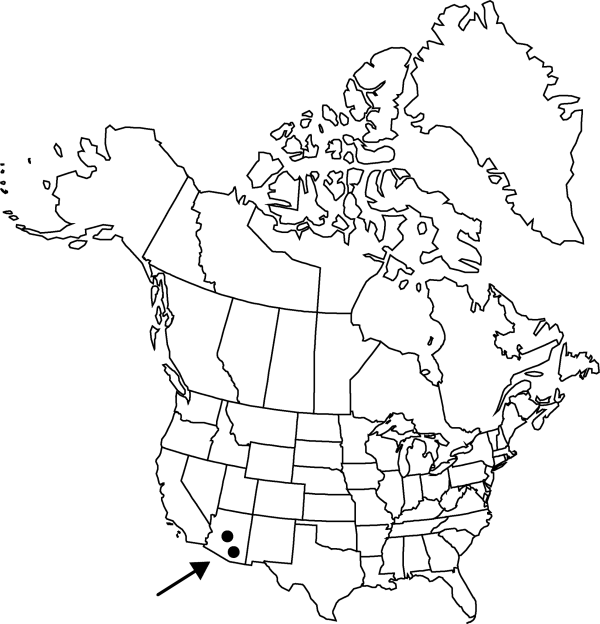Difference between revisions of "Opuntia microdasys"
Enum. Diagn. Cact., 154. 1837.
FNA>Volume Importer |
imported>Volume Importer |
||
| (7 intermediate revisions by 2 users not shown) | |||
| Line 8: | Line 8: | ||
}} | }} | ||
|common_names=Bunny-ears pricklypear | |common_names=Bunny-ears pricklypear | ||
| − | |basionyms={{Treatment/ID/ | + | |special_status={{Treatment/ID/Special_status |
| + | |code=I | ||
| + | |label=Introduced | ||
| + | }} | ||
| + | |basionyms={{Treatment/ID/Basionym | ||
|name=Cactus microdasys | |name=Cactus microdasys | ||
|authority=Lehmann | |authority=Lehmann | ||
| + | |rank=species | ||
| + | |publication_title=Index Seminum (Hamburg), | ||
| + | |publication_place=1827: 16. 1827 | ||
}} | }} | ||
|synonyms= | |synonyms= | ||
| Line 20: | Line 27: | ||
}}<!-- | }}<!-- | ||
| − | --><span class="statement" id="st- | + | --><span class="statement" id="st-undefined" data-properties=""><b>Shrubs,</b> erect to sprawling, to 1 m, with many small stem segments. <b>Stem</b> segments not disarticulating, bright green, flattened, circular to elliptic-obovate, (5–)7–10(–15) × (3–)4–8(–10) cm, low tuberculate, puberulent; areoles (9–)11–16 per diagonal row across midstem segment, subcircular, 2–5 mm diam.; wool white to tan, aging gray. <b>Spines</b> absent. <b>Glochids</b> numerous, nearly filling areole, usually yellow or whitish, sometimes reddish brown, to 3 mm. <b>Flowers</b>: inner tepals bright yellow throughout, aging peach, 25–30 mm; filaments and style white; anthers yellowish; stigma lobes dark green. <b>Fruits</b> red, spheric to ovoid, 20–25 × 12–16 mm, fleshy, pubescent, spineless; areoles 35–50. <b>Seeds</b> tan, nearly spheric (slightly flattened), 1–1.2 mm (perhaps infertile); girdle protruding to 0.5 mm. <b>2n</b> = 22.</span><!-- |
-->{{Treatment/Body | -->{{Treatment/Body | ||
| + | |phenology=Flowering spring (Apr–May). | ||
|habitat=Desert hills, uplands, sandy to loamy calcareous soils | |habitat=Desert hills, uplands, sandy to loamy calcareous soils | ||
|elevation=1700-2100 m | |elevation=1700-2100 m | ||
|distribution=Ariz.;Mexico (Coahuila;Durango;Nuevo León;San Luis Potosí;Zacatecas). | |distribution=Ariz.;Mexico (Coahuila;Durango;Nuevo León;San Luis Potosí;Zacatecas). | ||
| − | |discussion=<p>Opuntia microdasys is widely cultivated and sometimes naturalized in Arizona. In Mexico, O. microdasys hybridizes with O. rufida.</p> | + | |introduced=true |
| + | |discussion=<p><i>Opuntia microdasys</i> is widely cultivated and sometimes naturalized in Arizona. In Mexico, <i>O. microdasys</i> hybridizes with <i>O. rufida</i>.</p> | ||
|tables= | |tables= | ||
|references= | |references= | ||
| Line 35: | Line 44: | ||
-->{{#Taxon: | -->{{#Taxon: | ||
name=Opuntia microdasys | name=Opuntia microdasys | ||
| − | |||
|authority=(Lehmann) Pfeiffer | |authority=(Lehmann) Pfeiffer | ||
|rank=species | |rank=species | ||
| Line 42: | Line 50: | ||
|basionyms=Cactus microdasys | |basionyms=Cactus microdasys | ||
|family=Cactaceae | |family=Cactaceae | ||
| + | |phenology=Flowering spring (Apr–May). | ||
|habitat=Desert hills, uplands, sandy to loamy calcareous soils | |habitat=Desert hills, uplands, sandy to loamy calcareous soils | ||
|elevation=1700-2100 m | |elevation=1700-2100 m | ||
|distribution=Ariz.;Mexico (Coahuila;Durango;Nuevo León;San Luis Potosí;Zacatecas). | |distribution=Ariz.;Mexico (Coahuila;Durango;Nuevo León;San Luis Potosí;Zacatecas). | ||
| + | |introduced=true | ||
|reference=None | |reference=None | ||
|publication title=Enum. Diagn. Cact., | |publication title=Enum. Diagn. Cact., | ||
|publication year=1837 | |publication year=1837 | ||
| − | |special status= | + | |special status=Introduced |
| − | |source xml=https:// | + | |source xml=https://bitbucket.org/aafc-mbb/fna-data-curation/src/2e0870ddd59836b60bcf96646a41e87ea5a5943a/coarse_grained_fna_xml/V4/V4_269.xml |
|subfamily=Cactaceae subfam. Opuntioideae | |subfamily=Cactaceae subfam. Opuntioideae | ||
|genus=Opuntia | |genus=Opuntia | ||
|species=Opuntia microdasys | |species=Opuntia microdasys | ||
| − | |||
| − | |||
| − | |||
| − | |||
| − | |||
| − | |||
| − | |||
| − | |||
| − | |||
| − | |||
| − | |||
| − | |||
| − | |||
| − | |||
| − | |||
| − | |||
| − | |||
| − | |||
| − | |||
| − | |||
| − | |||
| − | |||
| − | |||
| − | |||
| − | |||
| − | |||
| − | |||
| − | |||
| − | |||
| − | |||
| − | |||
| − | |||
| − | |||
| − | |||
| − | |||
| − | |||
| − | |||
| − | |||
| − | |||
| − | |||
| − | |||
| − | |||
| − | |||
}}<!-- | }}<!-- | ||
-->[[Category:Treatment]][[Category:Opuntia]] | -->[[Category:Treatment]][[Category:Opuntia]] | ||
Latest revision as of 22:57, 5 November 2020
Shrubs, erect to sprawling, to 1 m, with many small stem segments. Stem segments not disarticulating, bright green, flattened, circular to elliptic-obovate, (5–)7–10(–15) × (3–)4–8(–10) cm, low tuberculate, puberulent; areoles (9–)11–16 per diagonal row across midstem segment, subcircular, 2–5 mm diam.; wool white to tan, aging gray. Spines absent. Glochids numerous, nearly filling areole, usually yellow or whitish, sometimes reddish brown, to 3 mm. Flowers: inner tepals bright yellow throughout, aging peach, 25–30 mm; filaments and style white; anthers yellowish; stigma lobes dark green. Fruits red, spheric to ovoid, 20–25 × 12–16 mm, fleshy, pubescent, spineless; areoles 35–50. Seeds tan, nearly spheric (slightly flattened), 1–1.2 mm (perhaps infertile); girdle protruding to 0.5 mm. 2n = 22.
Phenology: Flowering spring (Apr–May).
Habitat: Desert hills, uplands, sandy to loamy calcareous soils
Elevation: 1700-2100 m
Distribution

Introduced; Ariz., Mexico (Coahuila, Durango, Nuevo León, San Luis Potosí, Zacatecas).
Discussion
Opuntia microdasys is widely cultivated and sometimes naturalized in Arizona. In Mexico, O. microdasys hybridizes with O. rufida.
Selected References
None.